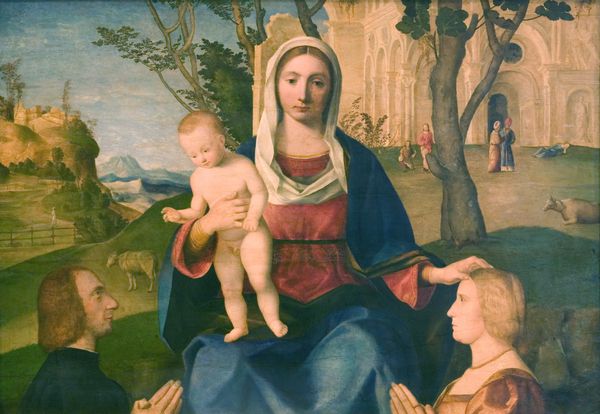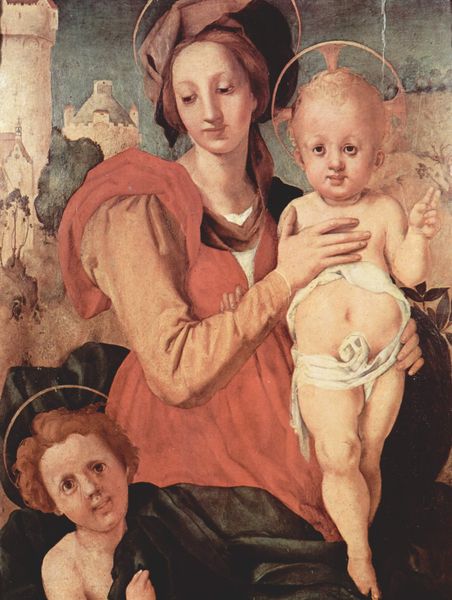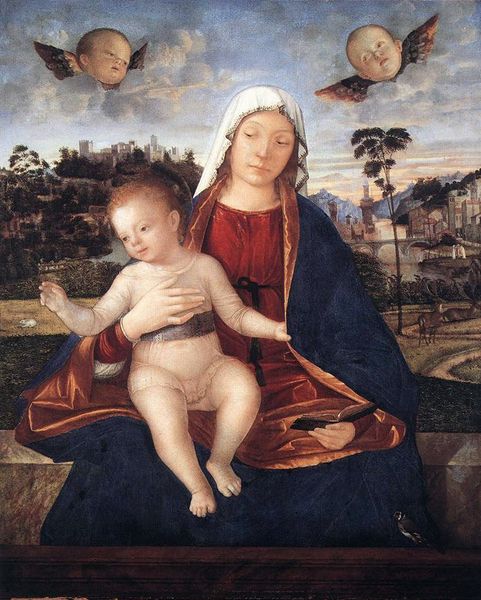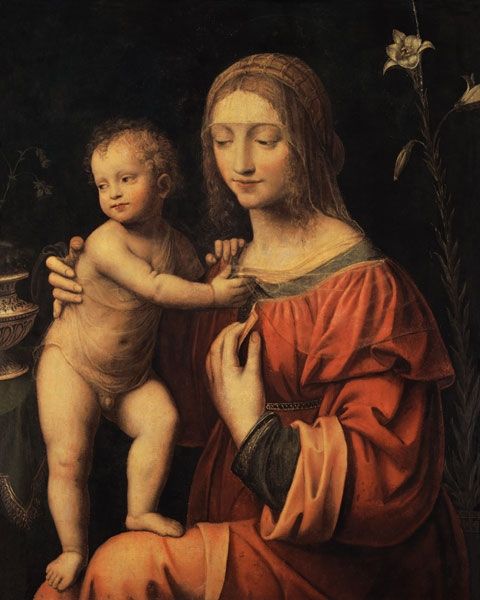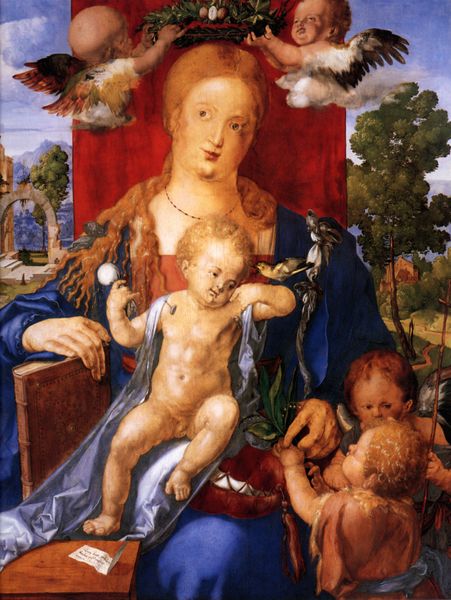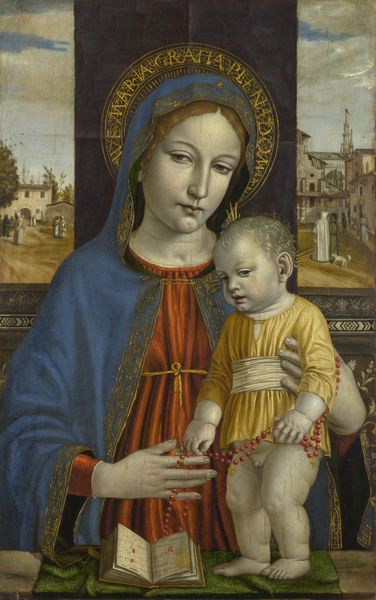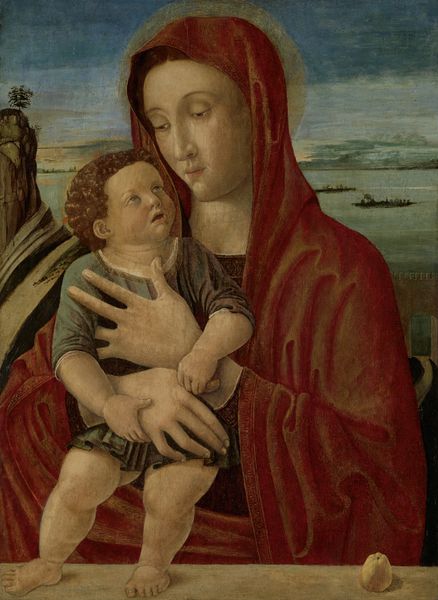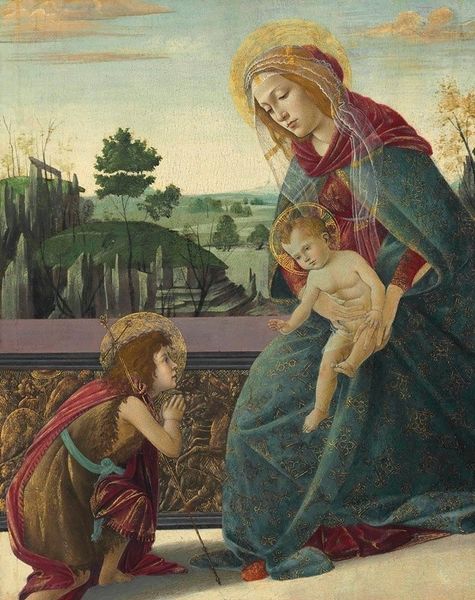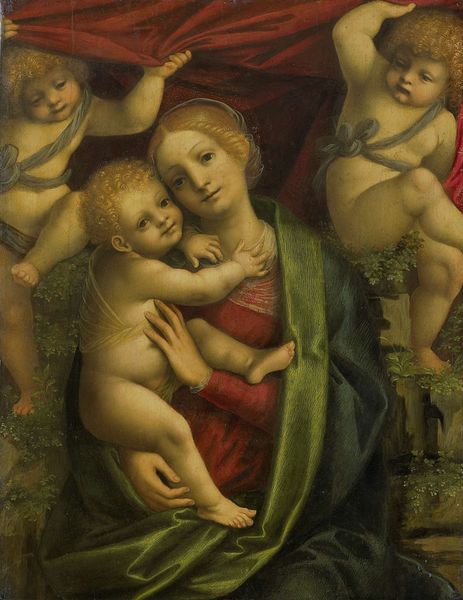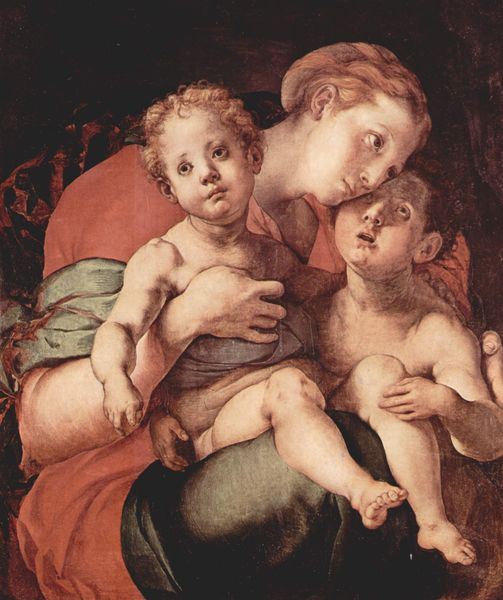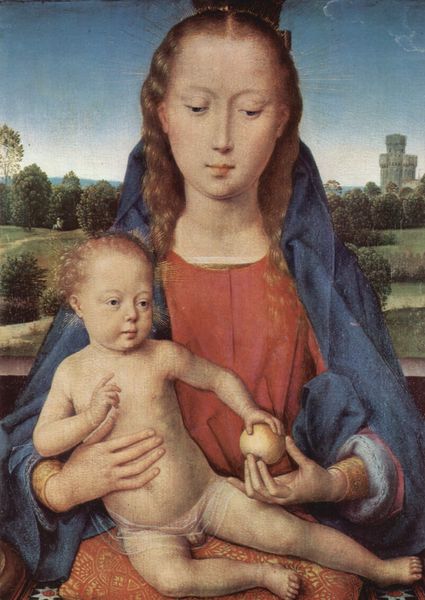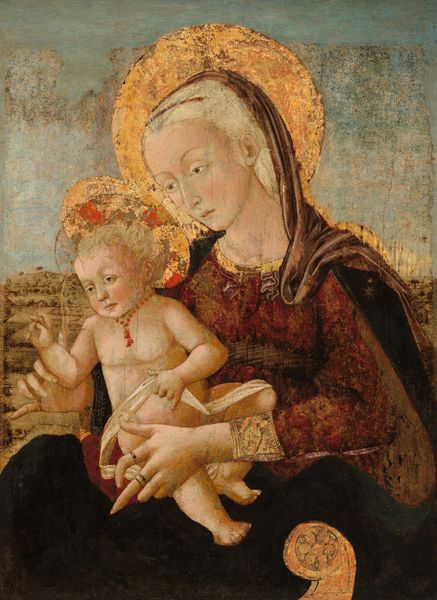
oil-paint
#
portrait
#
oil-paint
#
figuration
#
oil painting
#
child
#
christianity
#
history-painting
#
northern-renaissance
#
christ
Dimensions: 56 x 46 cm
Copyright: Public domain
Curator: At first glance, I'm struck by the cool detachment, almost severity, of the Madonna's expression. And the pale tonality gives the work as a whole an ethereal feel. Editor: Indeed. Here we have Lucas Cranach the Elder’s “Madonna and Child,” created around 1525. It’s an oil painting currently housed in the Pushkin Museum in Moscow, a captivating example of the Northern Renaissance’s encounter with religious themes. Curator: The grapes are a key iconographic element. They allude to the Eucharist, signifying Christ's blood and sacrifice, the promise of redemption. It also suggests an interesting perspective on nature as a pathway to spiritual experience. Editor: Cranach was deeply embedded within the political and religious currents of his time. He was a court painter for the Electors of Saxony, close to Martin Luther, which situates him centrally within the Reformation. This explains some elements. We know the culture wars of the era rejected established Church practices, simplifying its sacred imagery to more modest proportions, almost an intimate portrait. Curator: Look at that mountain in the backdrop. Is that the Wartburg Castle, where Luther translated the New Testament? That makes for a very interesting contextual layering. Editor: Yes! It firmly anchors the divine within a very specific geographic, political, and theological landscape. That specific connection certainly deepens the painting’s function as a statement about the local significance of faith. The Madonna becomes a symbol, not just of motherhood, but of the reformed Christian faith as a bulwark of this era. Curator: It’s powerful how he collapses these monumental ideological tensions into such a domestic, maternal scene. We see how a subtle rearrangement of traditional iconography serves as a radical proclamation, deeply entwined with shifts in society, politics, and belief. Editor: Ultimately, what strikes me most is the subtle ways Cranach imbues what appears to be a gentle image with revolutionary fervor.
Comments
No comments
Be the first to comment and join the conversation on the ultimate creative platform.
